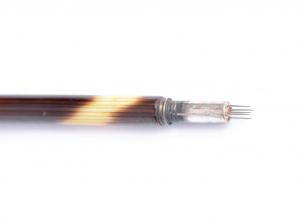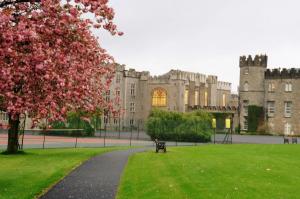Featured Archives, People, Events...
Explore Your Archive 2021 Featured Archives
Loreto Archives

The development of IBVM (Loreto) in Ireland from the first foundation, Loreto Abbey, Rathfarnham in 1822 and its expansion around Ireland and worldwide, is then surveyed. Finally, the obstacles and difficulties of the past and the future of IBVM are looked at.
Take a look here.
*
Explore Your Archive 2020 Featured Archives
RCPI
Online Exhibition: "The Most Terrible of All the Ministers of Death": Smallpox and the introduction of vaccination to Ireland
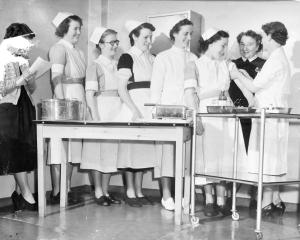
Nurses receiving their BCG vaccination, c.1950s
The first recorded vaccination in Ireland took place in 1800 against smallpox, then one of the most serious infectious diseases known. This exhibition explores the discovery of the smallpox vaccination, its introduction to Ireland and how the authorities rolled out the programme of vaccination, and where and when it was opposed. It also looks at contemporary vaccination in Ireland and why, in a time when there are numerous safe vaccines against a number of serious infections which have saved millions of lives, there has been a rise in anti-vaccination sentiment.
Detail of a 19th vaccinator and a certificate of compulsory vaccination, 1871
Visit this extraordinary online exhibition here.
*
NUI Galway
Digital Collection: Genevieve Lyons Archive
This digital collection is a series of material from the archive of theatre actress Genevieve Lyons, primarily between 1948 and the 1963. Based in Dublin, Lyons' career was mostly with the Globe Theatre Company, founded by Godfrey Quigley, Michael O'Herlihy and Dennis Brennan. Lyons also starred at other theatres including the Gate Theatre, Dublin, and the Pike Theatre on Herbert Lane. Lyons was born in Dublin on 5th of March 1930. Throughout her acting career in Dublin, Lyons consistently won acclaim for her performances and as a leading member of the Globe Theatre Company. The Globe performed primarily new international plays, as well as Irish plays, and provided Dublin audiences with a diverse new range of theatre and culture, from their base at the Gasworks Theatre, Dun Laoghaire.
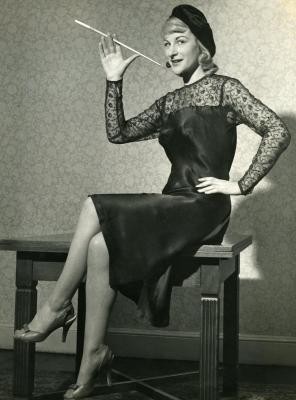
Lyons was a central member of the Globe Theatre Company. Founded by Godfrey Quigley and others including Michael O’Herlihy and Dennis Brennan, the Globe was an independent theatre company established in Dublin in 1954 as “a unique experiment in the Irish theatre”. The company sought to create a space outside of the urban centre of Dublin city for professional theatre. The first play presented by the company was the American funeral parlour comedy, "The Biggest Thief in Town" by Dalton Trumbo (1954). Based at the Gas Works Theatre in Dun Laoghaire, the Globe Theatre Company regularly performed on major stages such as the Gate Theatre, the Olympia Theatre, the Gaiety Theatre and were frequently part of the annual Dublin Theatre Festival. The group specialised in international theatre, as well as Irish plays, and premiered many new international works for Irish audiences.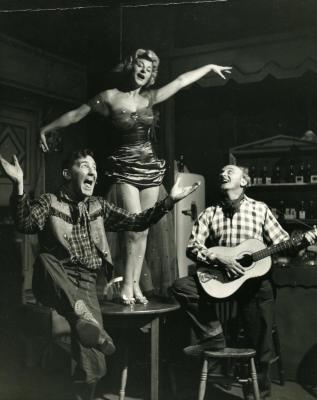
Key performances by Lyons include the role of Marion in the Irish premiere of J.P. Donleavy’s stage adaptation of his novel "The Ginger Man", famously censored and shut down after three performances in 1959, owing to pressures from the Archbishop of Dublin, John Charles McQuaid; Lydia Lubey in Arthur Miller’s "All My Sons" at the Gate Theatre, 1954; Christine in Gabriel Marcel’s "A Broken World", 1959; and as Sally Bowles in John Van Druton’s "I Am a Camera" which was seen by over 15,000 people at the Gas Works Theatre in Dun Laoghaire in 1956.
For more information on the Genevieve Lyons Digital Collection see here.
*
Royal Irish Academy
Online Exhibition:
Creative Women of Ireland: Artists and Writers from the archives
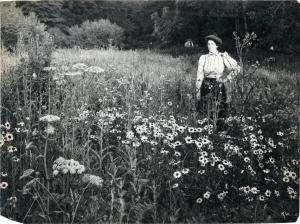
Photograph of Sophia Rosamond Praeger at Slieve Glah in Co. Cavan, June 1896. Photographer: Robert J. Welch (RIA Praeger Collection)
From little known artists to well-established writers, this exhibition turns the spotlight on creative women from the Academy’s archives. Explore the lives of Sophia Rosamond Praeger, Eileen Barnes, Mary Fitzpatrick, Mia Cranwill, Lady Sydney Morgan and Katharine Tynan
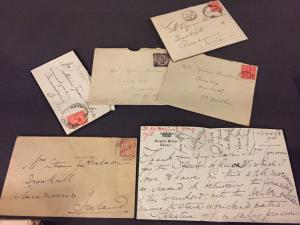
Correspondence of Katharine Tyson-Hinkson. RIA MS 12 x 19

Address to Rev. Nicholas Donnelly DD, Lord Bishop of Canea, Parish Priest of St Mary’s, Haddington Road, Dublin on the occasion of the silver jubilee of his episcopal consecration. [Dublin, 1908]
The full exhibition can be viewed online here.
*
Military Archives, Cathal Brugha Barracks
Online exhibition: Niemba Ambush Anniversary
On the 8th November 1960, while serving in the Congo as part of a United Nations peacekeeping mission, a patrol of 11 men were ambushed by Baluba Tribesmen. 9 were killed. The men were part of “A” Company, 33rd Infantry Battalion.
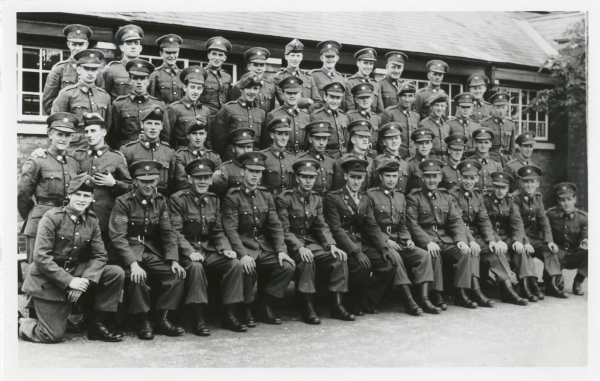
“Lt Gleeson’s platoon, 33rd Battalion”
The 33rd Battalion were deployed to the Republic of Congo in August 1960. They were the second Irish contingent to serve overseas in this capacity. A post was set up in the village of Niemba in October and Lt Gleeson and his platoon were ordered to command it. On Tuesday 8th November, 1960 Lt Gleeson was accompanied by 10 members of his platoon on a patrol which made their way towards Kinsukulu. The men were ambushed at a broken bridge on the River Luwuyeue by a large group of Balubas.

“Site of Ambush”
After the patrol failed to return, a search party was organised at Battalion Headquarters and reinforced by troops at Niemba. In the days after the ambush, 8 bodies were found. These were identified as Lt Gleeson, Sgt Gaynor, Cpl Dougan, Cpl Kelly, Pte Fennell, Pte Killeen, Pte Farrell, and Pte McGuinn. Tpr Browne’s remains were found 2 years after the ambush. Pte Fitzpatrick and Pte Kenny were the only survivors. This exhibition provides information on the ambush, the search patrol sent to recover the bodies, the operation to apprehend injured Balubas involved in the ambush, and the impact at home.

“Funeral cortege of Niemba Victims on the way to Glasnevin Cemetery - Brother Allen Collection”
The online exhibition, curated by Archivist Linda Hickey can be seen here.
*
Military Archives, Cathal Brugha Barracks
Online exhibition: RIC Dismissals and Resignations during the Revolutionary Period
The Committee of Enquiry into Resignations and Dismissals from the Royal Irish Constabulary (RIC) was appointed on the 28th November 1922 by Mr Kevin O’Higgins, TD and Minister of Home Affairs. The Committee was required to investigate cases where members of the constabulary resigned or were dismissed from the RIC between 21 January 1919 and 11 July 1921 because of their nationalistic sympathies.
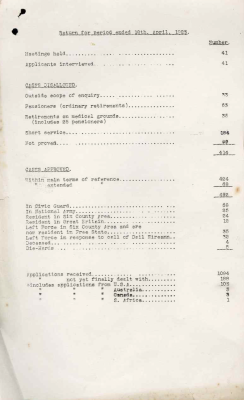
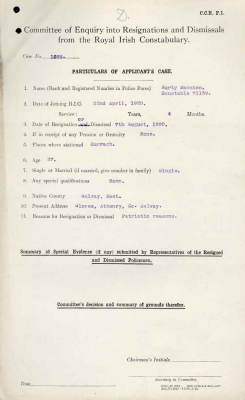
“Part of the interim report of the Committee- statistics on applications received” “Example of an application form - MIPR collection”
Material in this exhibition is taken from the MIPR Collection (Military Intelligence and Press Analysis, Civil War), and Colonel Thomas Gay’s private collection. The exhibition provides information about the applications, the work of the committee and committee member, Colonel Thomas Gay. In civilian life, Gay was a Librarian and during the War of Independence, was part of Michael Collins’ intelligence network.
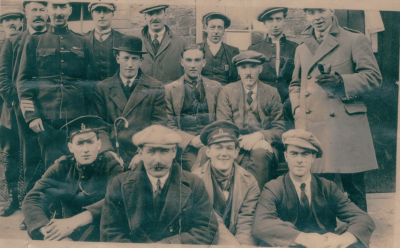
“Sgt Rawley, RIC from IRA Intelligence Scrapbook – BMH Collection”
The online exhibition, curated by Archivist Lisa Dolan and Archives Volunteer Gerry McCann (retired Sergeant, Air Corps) can be seen here.
*
Tower Museum, Derry / Londonderry
Online Exhibition: The Patrick Maxwell Diaries

These incredible diaries tell the story from the viewpoint of Patrick Maxwell, a solicitor who lived in East Wall, Derry at the turn of the 20th century. He traveled to the United States and Canada on multiple occasions, documenting the experiences on board a transatlantic journey and noting the emigrants around him in great detail.
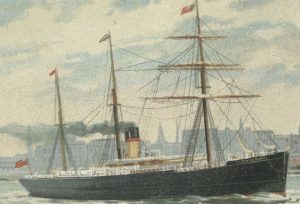

Images include views the voyages as published in the Derry Journal, as well as a series of newspaper cuttings on goings on in the town around this period.
For more information click here.
*
Tower Museum, Derry / Londonderry
Online Exhibition: Londonderry Corporation Minute Books
Londonderry Corporation Minute Books have now been digitised, in a joint digitisation project with PRONI, and are available to view online. Each minute book begins with the date of the meeting of the Common Council and a list of those members in attendance. In the late 17th and 18th centuries, the city’s business life consisted of merchants and craftsmen such as butchers and bakers, tailors and shoemakers, smiths and saddlers, joiners and coopers.

The Corporation leased out the quay, the cow market, the general market (and collection of tolls), the mills and the ferry. The main market was in the Diamond and the Corporation settled a scale of market fees.
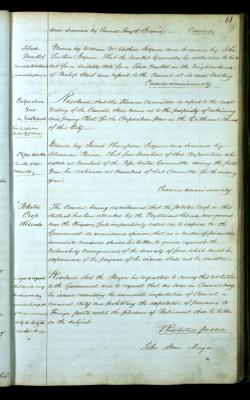
For more information click here.
*****
Clongowes Wood College Archive
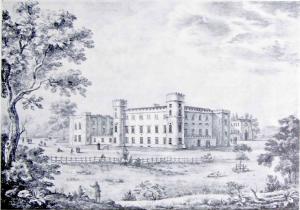
A 19th Century Line Drawing of the Castle and College. Courtesy of the Clongowes Wood College Archive
History and development
Clongowes Wood College SJ has a long and rich history of education in Ireland since it was founded in 1814 by Fr Peter Kenney SJ. It was the first work of the Society of Jesus worldwide following its restoration that year after 41 years of suppression. The college was located outside of Dublin to avoid affront to the British authorities as the Penal Laws remained in force and constraints on Catholic Education were many. The chosen location was a historic one on the line of The Pale and there had been castles on the site since 1450. The new school occupied the relatively modern 18th century version with the entire community of Jesuits and students living in the same building.
Notable past pupils
For more than two centuries, the college has produced many notable alumni including leaders in business, politics, social justice, sport and the arts. Graduates of the college have gone on to become leaders in Ireland and the Jesuit project was encapsulated in one man in 1914, when Old Clongownian, John Redmond was on the brink of becoming the first Prime Minister of Home Rule Ireland. Other prominent past pupils range from the author James Joyce (part of whose novel A Portrait of the Artist as a Young Man is set in the school) to Thomas Francis Meagher, Michael Joseph ‘The’ O’Rahilly and Kevin O’Higgins.
The College and Castle today. The windows of the archive may be seen in the bottom left hand corner of the castle building
The Archival Collection
The collection comprises papers, visual materials and artifacts relating to the history of Clongowes since its foundation. There are bound volumes of handwritten records from the 19th and early 20th centuries as well as school attendance and examination records, books of account and diaries. There are also copies of various prospectuses as well as all issues of the school annual, The Clongownian, a valuable historical resource, which has been published since 1895. There are photograph albums, VCR tapes, DVDs, maps and floor plans/sketches for building projects.
The collection also includes materials from the collections of various previous owners, when the buildings and grounds as well as items donated by various Jesuits and Old Clongownians. There are also some artifacts of both a religious and a personal nature including an original school uniform and glass plates of overhead photographs taken from a kite.
The collection is divided into eight series:
- The history and involvement of the Jesuit Community both in the school and its hinterland.
- Materials relating to the purchase of the property and the development of the many buildings that have arisen as the school has developed.
- The governance of the college and the Jesuit Community.
- Jesuit Ethos in the school and its perpetuation in their potential absence.
- The changing nature of education in the school from the initial classical approach to the modern points based system.
- Indoor co-curricular activities such as debating, drama, music and academic presentations.
- Outdoor co-curricular activities including athletics, football, cricket, tennis and golf.
- The financial stewardship of the school from income in the form of fees, government grants and bequests to capital and current expenditure.
Access arrangements
It is the intention of Clongowes, in tandem with the Irish Jesuit Province and its proactive approach to access, that the collections in the archive be made known and be as available as possible. In normal times the archive is available to researchers by appointment (045 -868202) on Tuesdays and Thursdays (09.00-17.00) during the academic year, but other days (and times of year) are possible by arrangement.
Declan O'Keeffe, Assistant Archivist and College Historian; Editor, The Clongownian
*****
Wicklow County Archives
Shillelagh Workhouse Records
The admission and discharge registers of the Shillelagh Union workhouse date from 1842, just before famine times. These are perhaps the most poignant records at Wicklow County Archives, illustrating the suffering of the poor in the lists of names of those admitted to this institution.
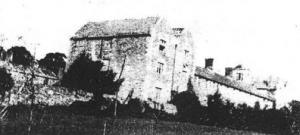
For more information on this and our other collections available online please see here.
*****
Explore Your Archive 2019 Featured Archives
Dublin City Library and Archives
‘A Christmas Spectacle: The Story of Panto in Dublin’ Exhibition
Dublin City Archives’ latest exhibition is called ‘A Christmas Spectacle: The Story of Panto in Dublin’. This colourful exhibition traces the history of the pantomime tradition in our capital city, through the stories of its theatres and its entertainers. It takes audiences down memory lane with material relating to the Theatre Royal and the Queen’s Theatre, as well as from the collections of Jimmy O’Dea, Vernon Hayden, Cecil Sheridan and Noel Purcell. There will also be lots for the younger audience with features on more recent heroes, such as Twink, Jedward and Joe Conlan.
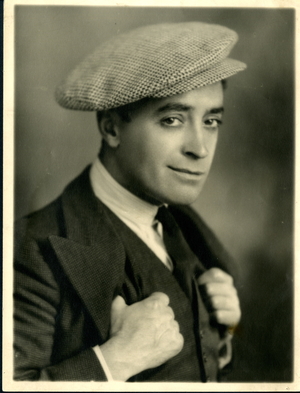

The exhibition can be found in the Dublin Room of Pearse Street Library, 138-144 Pearse Street, and will run until the end of January 2020.

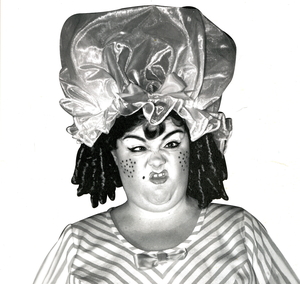
Admission free, open 10-8 Monday- Thursday, and 10- 5 Friday and Saturday.
*
Louth County Archives
Joseph Dolan Papers
The Joseph Dolan Papers was donated to Louth County Archives in 2004. A mixed collection, it consists primarily of personal correspondence received by Joseph Dolan (1872 – 1930) dating largely from 1901 – 1933. The correspondence relates to the many activities that he was involved in.
Joseph Dolan was a businessman and a scholar of ancient classics and Celtic studies. Upon his father’s death in 1902, he took over the running of the family grocery and hardware business in Ardee. He held a keen interest in antiquities, his local community, industry and enterprise, as well as local and national politics, serving for a time on the Ardee Town Commissioners and Louth County Council. He was known to have been a philanthropist helping many charitable causes and local enterprises in addition to being a member of many local societies and organizations.
Dolan was the first president of the County Louth Archaeological Society in 1904-05 and later was editor from 1915-30. He was also an Irish language enthusiast and long supported the teaching of Irish in schools. He assisted Patrick Pearse in establishing St Enda’s school. Dolan was a supporter of the Gaelic League where he took an active part in local branches and he was friendly with Douglas Hyde, the President of the Gaelic League.

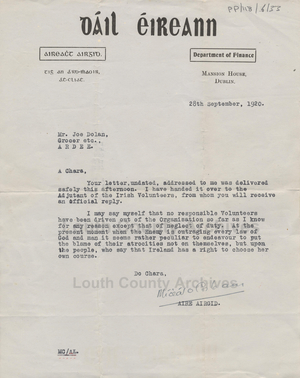
Part of a letter from Douglas Hyde to Joseph Dolan (1915) Letter from Michael Collins to Joseph Dolan (1920)
Joseph Dolan was a prolific writer who contributed articles on various topics to newspapers and he often wrote to public figures in national politics conveying his point of view regarding Irish nationalism and independence. The collection contains reply letters from several of these figures.
*
ESB Archives
‘Kitchen Power - Women’s Experiences of Rural Electrification’
An exhibition “Kitchen Power’ examining the effect of rural electrification on women in Ireland in the 1950s and 1960s was launched by former President of Ireland Mary Robinson at the National Museum of Ireland – Country Life, in Turlough Park, Castlebar, Co Mayo on Friday 19th July.
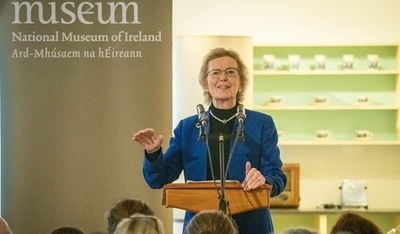
The first phase of Electricity Supply Board’s (ESB) rural electrification programme began in 1946 and ran until 1965 with a post-development phase running into the 1970s. Although many rural women worked in offices and shops, as well as on the farm, the marriage bar and prevailing cultural attitudes meant that many women’s experiences of rural electrification were at home, where the kitchen was the focus of domestic work. The free exhibition, now open until July 2020, features extensive material from ESB Archives, including photographs, advertising, public relations pamphlets, films and household artefacts. Curated by Dr. Sorcha O’Brien of Kingston University, Senior Lecturer in Design History and Noel Campbell of National Museum of Ireland, it also includes 60 fascinating oral histories from women who worked in the home through rural electrification and ESB demonstrators.
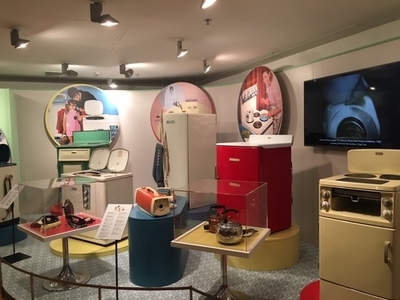
The exhibition explores how domestic electrical products were advertised and promoted as part of a modern lifestyle – moving from the traditional hearth to the fitted kitchen without challenging established gender roles.
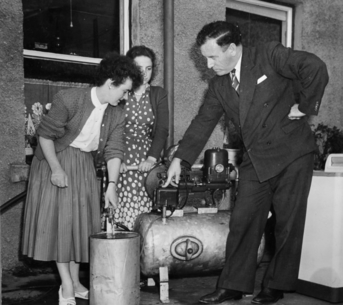
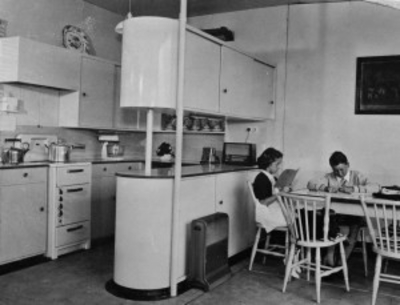
Along with artefacts and the oral history recordings – many from members of the Irish Countrywomen’s Association – ‘Kitchen Power’ also includes an ‘Electric Irish Homes textile art project’ commissioned by Age & Opportunity as part of the Bealtaine Festival, who engaged Sligo artist Anna Spearman to work with local women in Mayo to respond creatively to the Exhibition.
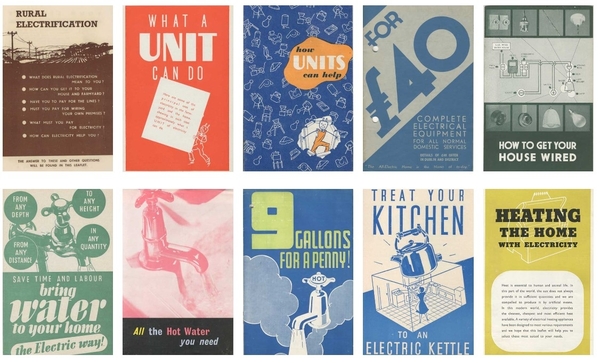
It also features a reconstruction of a 1950s ESB/ICA model kitchen which was constructed in the Museum galleries by Phillip Carey, a final year BSc (Hons) Furniture Design and Manufacture student at Galway-Mayo Institute of Technology, Letterfrack campus.
Speaking at the launch, Director of the National Museum of Ireland, Lynn Scarff said; “We are delighted to have partnered with Kingston University, the Arts & Humanities Research Council (AHRC), and the ESB in the development of this Exhibition, and we’re grateful to everyone who has contributed to it. A special thank you must go to the women who shared their stories, the exhibition is all the richer for their fascinating first-hand accounts of how electrification impacted on their lives.” ESB’s Deputy Chief Executive, Jerry O’Sullivan said; “This exhibition provides a fascinating insight not only into the transformative effect of rural electrification on the lives of women, but also the pioneering role that women played in driving the early adoption of electricity – from the ESB-employed demonstrators whose job it was to educate people on the use of new electrical appliances to women in partnership with organisations such as the Irish Country Women’s Association (ICA), the IFA and Muintir na Tíre, who saw the potential of electricity and championed it within their communities. As we look to a future where clean electricity will play a vital role in addressing climate change, we need to harness the same creativity and leadership within communities to demonstrate the benefits of electric transport and heating, and in doing so create a brighter future for all.”
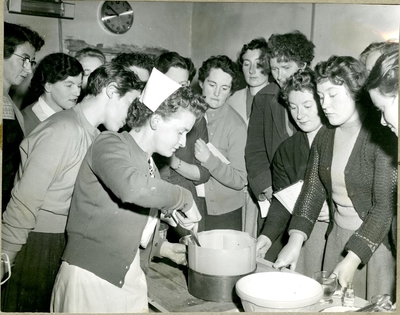
For more content on rural electrification and other collections in ESB Archives, visit us online.
*
Tipperary Studies
Captain William D.A. Kemmis film collection
The Kemmis collection is a small collection of film reels ranging from the mid to late 1930’s. The reels, stored in an old suitcase came from Moyaliffe House, which was home to the Armstrong family from the seventeenth century to its sale in 1999. Winona (Jess) Armstrong inherited Moyaliffe following the death of her only brother, William in France in 1917. Jess married Captain William Kemmis of Ballinacor, Co. Wexford in 1927..
The suitcase was given to a local family some years ago and brought in to Tipperary Studies in 2018. While the films could not be viewed locally, a brief index on some of the boxes suggested the contents might be of social and cultural interest.
The 16mm film was converted to digital format by the DVD Centre, Dublin and with the kind permission of family descendants relevant material was placed online in our digital archive.
The archive is accessible here and contains some footage of farming in Tipperary, horseracing and the coronation.
*
RTÉ Archives
and using a second hand Leica camera, shot a series of photographs depicting the people and places of the
'real' Dublin of that time. As an outsider looking in, he captured a valuable social record of the city before it
changed irrevocably.

Published in 1981 by Academy Press Nevill Johnson’s book ‘Dublin : The People’s City’, a collection of these
photographs, won an award at the Leipzig International Book Art Fair.
has digitised the collection on two occasions, firstly in the mid 1990s, and again in the mid 2000s. The images
were originally scanned as 18 MB JPEG files using the once cutting edge, but now defunct Photo-CD
technology.
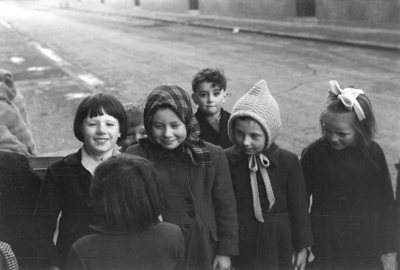
RTÉ Archives is currently rescanning the Johnson Collection with the assistance of Grants Advanced PhotoLab
and Digital Bureau. This time the resulting scans are 300MB TIFF files. Whereas previous digitisation attempts
saw the collection reproduced with a certain gloom and dullness, great care is being taken to select an
appropriate tonal range for each frame.

To date approximately one third of the collection has been rescanned and the results show a collection
completely enlivened by the digitisation process. This is most apparent in the faces of the Dubliners captured
on film over 60 years ago.

The Johnson Collection can be viewed online as JPEG images, and we expect the entire rescanned collection to
be fully available by the end of 2019.
*
Loreto Archives
“To be Taught Everything Necessary”
Discover 19th Century Childhood through Loreto Boarding Schools
‘To be taught everything necessary …..’; these were the instructions of the parents of Ellen Hart, 28 Watling Street, Dublin, when she enrolled as a boarding pupil in Loreto convent Navan in 1838.
What curriculum included ‘everything necessary’? What was Ellen’s experience of boarding school in 1838? Explore the world of 19th century childhood through a unique collection of boarding school records and memorabilia, held in IBVM (Loreto), Institute & Irish Province Archives. Discover a world of childhood illnesses and remedies exemplified in the letter of M. Frances Teresa Ball IBVM to Mrs Irwin, Rathmile House, Tulsk, Co. Roscommon, on New Year’s Eve 1829, describing her daughter Margaret’s recovery from scarlet fever. Look out for the prescription for wine!

Explore school dress codes in an age before school uniforms, captured in the Loreto Kilkenny class photograph of 1897; lace collars and cuffs proudly on display vie with prominent ‘Children of Mary’ medals for those in senior classes with unblemished records!

Uncover the transition from standard classrooms to laboratories and kitchens as students began to study science and home economics, conduct experiments, study catering and dressmaking skills.
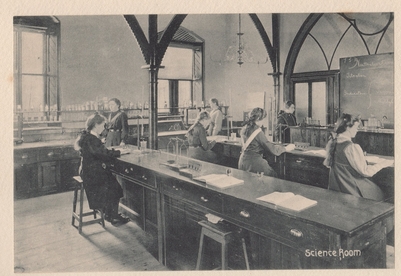
Rediscover 19th entertainments through hand painted lantern slides with moving parts, providing entertainment in a world before radio, television or Wi Fi.
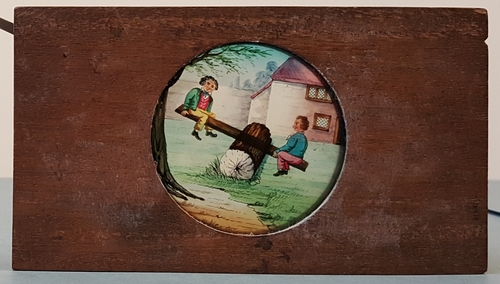
View the world through the eyes of a young woman captured in her diary, jottings and autograph books such as this from Loreto Wexford.

Discover our archival collections at IBVM (Loreto) Archives, 55 St Stephen’s Green, Dublin 2 or our online catalogues through the Irish Archives Resource (search for ‘Loreto’ on the www.iar.ie website).
*All images IBVM (Loreto) Institute & Irish Province Archives
Explore Your Archive 2018 Featured Archives
ESB Archives
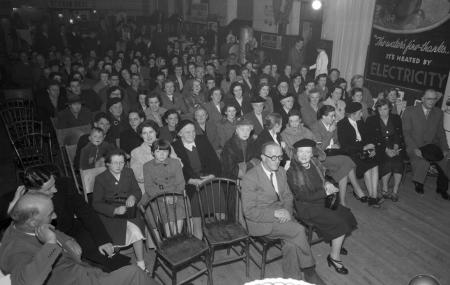
ESB Archives launch Film Archive
To celebrate Explore Your Archive, ESB Archives have launched previously unseen short films and documentaries commissioned by ESB’s Public Relations Department from the 1920s to the 1980s. ESB Archives film archive offers unique insights into the social, cultural and economic development of Ireland throughout this period.
2018 marked the 90th anniversary of the establishment of ESB’s Public Relations Department. Headed by Ned Lawlor, ESB Public Relations Officer 1928 – 1947, the purpose of the department, described in ESB’s 1928 Annual Report was: ‘to keep the public as fully informed as possible to the Board’s activities’. ESB first dipped its toes in the world of film when they entered an agreement in April 1928 with the First National Pathé Film Company to film Ireland’s first hydroelectric station on the River Shannon at Ardnacrusha, Co. Clare. The film was shown in cinemas, schools and colleges nationwide for educational purposes.
From the 1950s – 1980s many of ESB’s films were produced by the freelance filmmaker George Fleischmann (1912 - 1995). Throughout this period, Fleischmann made c. fifteen films for ESB ranging from films about new power stations to documentaries on rural electrification and ESB’s consultancy abroad, known today as ESB International. The first of the documentaries produced in 1955 by Fleischmann, ‘Power for Progress’, narrated by the broadcaster Eamonn Andrews details ESB’s remarkable contribution to Irish society from its foundation in 1927 to 1955. In addition to footage of ESB’s various hydro, peat and coal stations the documentary provides footage of domestic scenes from the 1950s, the benefits of the all-electric house. Social insights are explored through footage of industrial and commercial activity throughout Ireland. Views of the original Georgian landscape on Fitzwilliam Street provide architectural insights before the re-development of ESB’s Head Office in the 1960s.
On a futuristic theme, the short film ‘Power for Tomorrow’ produced in 1968, explores the countless benefits that electricity has brought to everyday life in Ireland opening with scenes from the air traffic control centre at Dublin Airport. The documentary ‘More Power to the Farmer’ produced in 1957, eleven years into the Rural Electrification Scheme featured the Irish actor John Cowley who later starred in the television series, The Riordans. The documentary details the impactful story of rural electrification throughout this transformative time in Irish history, described as the greatest social revolution in Ireland since the land reforms of the 1880s. The 1961 short film ‘Modern Living Country Style’ filmed at the RDS on the occasion of the Horse Show features the journalist and first female Lord Mayor of Limerick City, Francis Condell demonstrating the most modern country home equipped with new electric appliances transforming the lives of Irish housewives through practical and innovative design. ESB employees were a regular feature in many of the documentaries, in particular the 1972 documentary on Turlough Hill, Co. Wicklow, ‘Peak Power’, dedicated entirely to the workers. It features interviews with the employees who contributed to the largest pumped storage civil engineering project of its time.
For those looking for more detailed technical aspects of engineering projects, the 1977 documentary ‘Poolbeg, Story of a Generation Station’ details the mammoth construction of a generation station and the logistics required. Filmed over a year period the documentary captures significant milestones throughout the project. Footage extends beyond Irish shores, with the 1982 film, ‘Partners in Power’ showcasing ESB’s consultancy overseas, known today as ESB International, documenting electrification projects in Bahrain and Saudi Arabia. Looking towards the future was a common theme throughout the documentaries and the 1984 film ‘Tomorrow’s House Today’ was no exception. A research project based on the construction of six houses in Kilcock, Co. Kildare, the film depicts the planning and construction of the houses, each fitted with various electrical and insulation systems. The results were monitored and analysed by ESB to ensure that the most efficient building and insulation techniques will be used in the future.
To view the on-line film archive please visit www.esbarchives.ie/film
Deirdre McParland, Senior Archivist, ESB Archives.
*****
Tipperary Studies, Tipperary County Council

Co. Tipperary Poor Law records
In 1838 the Irish Poor Law Act was passed, introducing a new system of state welfare in the country. Over 100 Poor Law Unions were set up. Each Union had a Workhouse, financed by the payment of rates – taxes on property – on landholders in the Union. The vast bulk of the Poor Law Union (PLU) sources are comprised of Minute and Rate Books. Minute Books contain the records of each weekly meeting of the Board of Guardians – the board entrusted with the administration of the Workhouse – and take account of the finances of the Union, procurement of provisions, hiring of staff, management of inmates and any other issues that may arise as regards the week-to-week running of the Workhouse. Rate Books took account of the occupiers of property and the nature of the property they occupied, and can be very useful genealogical sources.
Tipperary Studies holds records for the following Poor Law Unions Borrisokane, Cashel, Clogheen, Clonmel, Nenagh, Roscrea, Thurles and Tipperary. (please note that Registers for the Workhouses only survive, in part, in Borrisokane, Cashel, Roscrea and Thurles Unions, and Rate Books for Nenagh, Thurles and Cashel Unions);
As part of our digitisation project we have published some of the Registers online. Available to view or download at http://tipperarystudies.ie/
*****
National Library of Ireland; Seamus Heaney, Listen Now Again Exhibition

In 2011, Seamus Heaney and his family donated his writer’s archive to the National Library of Ireland, joining what he called a “human chain” of other writers whose papers are at the NLI. Catalogued by archivist Frances Clarke, the collection has been extensively consulted by researchers. Now it has been opened up to an even wider audience, with a selection of the original manuscripts, letters, unpublished works, diary entries, and photographs at the heart of Seamus Heaney: Listen Now Again, the National Library of Ireland’s major new exhibition at the Bank of Ireland Cultural and Heritage Centre on Westmoreland Street.
The free exhibition offers an intimate encounter with Seamus Heaney’s journey, from his childhood in Bellaghy, Co Derry, through to his global renown as a universally admired poet. Exhibition designers Ralph Appelbaum Associates worked with the National Library to display the collection to best advantage, using an elemental colour palette and specially designed individual mounts for each item on view. The manuscripts selected by exhibition curator Geraldine Higgins, Director of Irish Studies at Emory University, show the poet in conversation with himself; revisions and queries scrawled across drafts of his work, appearing on anything from notebooks to the backs of envelopes and loose pieces of paper. More than 100,000 visitors have already visited the exhibition, and been moved and inspired by the story of a writer at work revealed by this fascinating archive.
*****
IBVM (Loreto) Archives
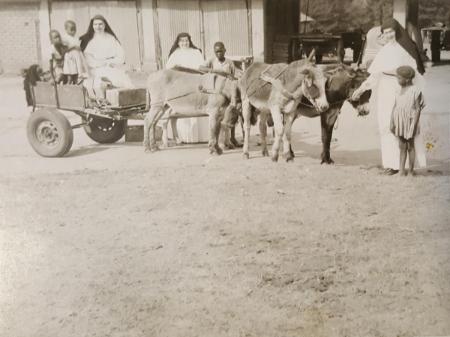
Inspiring women –Sr Rita Garcia IBVM
‘....women in time to come will do much...’
These are the words written by Mary Ward, founder of the IBVM religious order in the 17th century, more commonly known as Loreto. Her prophetic words are as relevant today as they were 400 years ago. Her words have challenged and inspired generations of Loreto women to respond to the social and humanitarian needs of their time. Sr Rita Garica IBVM was one such respondent. A native of Spain, she joined the Loreto mission in South Africa in 1918 and in 1929, with two other Loreto Sisters arrived at the remote Catholic Mission of Glen Cowie (South Africa) determined to meet the needs of the local communities. Living in the isolated mission and ill equipped for their work, the Sisters travelled on foot visiting homes and villages, providing pastoral and health care.
Recognising the urgent need for health care, Sr Rita embarked on an informal medical career, travelling on her rudimentary cart pulled by two donkeys aptly named ‘Peter’ and ‘Paul’ to visit and later to transport the sick, especially children, to the missionary clinic in Glen Cowie. Sr Rita garnered a reputation for her medical ability, particularly in dentistry, and queues of patients soon formed for her attention! In 1935, she was formally appointed to oversee the management of a new eight bed clinic, and in 1942 was appointed first matron of a new 60 bed hospital; which was renamed St Rita’s Hospital in her honour. During her years as matron she oversaw the establishment and development of a nurse training unit and the progression of the clinic from a rudimentary four roomed clinic to a large, modern hospital. By the early 1960s services offered by the hospital had expanded to include general hospital care, maternity services, paediatric services, surgical theatres and a TB isolation unit. In 1977 the hospital was handed over to the government of Lebowa, fulfilling Mary Ward’s aim of empowering and enabling women, and the wider missionary aim of building independent and sustainable local communities. St Rita’s hospital continues today as a government hospital and a training facility for medical professionals.
Sr Rita died in 1964, and her funeral was attended by ‘over one thousand people’. Guards of honour were formed by the ‘nurses and other staff members of St. Rita’s Hospital, Jane Furze Hospital and the pupils of Guardian Angels’ College, reflecting the deep bonds she had built with the local community. Over 35 years of inspiring ministry in Glen Cowie, Sr Rita Garcia IBVM embodied Mary Ward’s prophetic words that ‘women in time to come will do much’.
Explore the IBVM (Loreto) ministry in South Africa and the inspiring ministries of women who devoted their lives to the prophetic vision of Mary Ward, that ‘women in time to come will do much’, at IBVM (Loreto) Archives, 55 St Stephen’s Green, Dublin 2; https://loreto.ie/history/loreto-archives/, or our online catalogues through the Irish Archives Resource (search for ‘Loreto’ on www.iar.ie website).
*****

